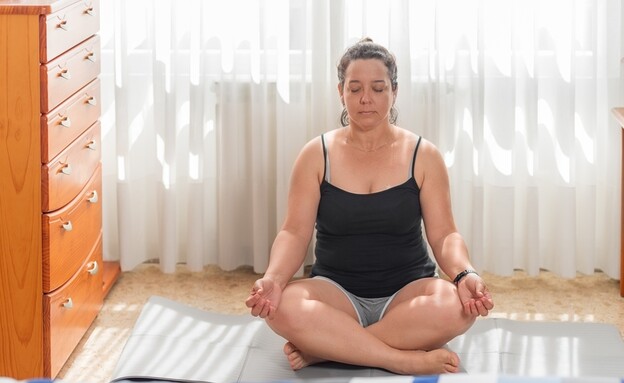So how can exercise help and when can you go back to exercising?
The experts recommend waiting for the doctor’s examination, which is carried out six to eight weeks after the operation, a time when the tissue unites and the stitches are absorbed. The rest period is designed to prevent possible complications and to prepare the basis for a gradual return to activity that will take a different amount of time from woman to woman. However, the gradual return to activity has great meaning and many advantages:
- It helps the recovery of muscles and strength even when it is performed gently and in a targeted manner, and helps to start rebuilding the abdominal muscles and strengthening the muscles of the pelvic floor.
- Improves the mood and lowers the chance of postpartum depression – as we know, physical activity results in the release of endorphins, which are considered natural antidepressants and help reduce stress and feelings of depression.
- Helps with weight management – every activation of the muscle system increases caloric expenditure. Even low-intensity activity, which subtly affects energy expenditure, is of great significance in the feeling of doing, control and management of health and body composition, and hence the easier way to control nutrition, decrease fat percentages and increase muscle mass.
- Improves the energy levels in the body – the exercises will improve the basic physical fitness and help to improve the daily function and the new needs of motherhood. True, during this period the fatigue levels are high, and sometimes it seems that the last thing you want to do is exercise, but the measured activity will actually make the struggle easier.
The main thing is to go | Photo: Rasstock, shutterstock
Five recommended exercises
Choosing the right exercises is critical to the recovery of the body and a proper return to fitness. You should consult the doctor and make sure that the exercises are adapted to the stage you are in, but as a general rule, you can start with the following basic exercises:
- Sitting exercises to strengthen the pelvic floor: Sit comfortably and perform for a few seconds a contraction of the pelvic floor by holding and contracting the sphincters, gathering the deep layer of muscles in the pelvis upwards and sucking the navel towards the spine.
- Breathing exercises to strengthen the deep abdominal muscles: This exercise is also performed while sitting. Place one hand on the chest and the other hand on the stomach. Take a deep breath, make sure the stomach rises more than the chest, exhale slowly and under control. Repeat the operation for 5 minutes.
- Sitting on the wall: An excellent exercise to strengthen the leg muscles. Lean against the wall with your back straight and sit in an imaginary chair. The exercise can be performed for a few seconds several times and gradually increase. From day to day you will feel the difference.
- Massage the surgical area: Massaging the scar from the caesarean section is important for speeding up recovery and returning sensitivity to the site. Be sure to perform the massage with clean hands and perform it in a gentle circular manner around the scar while applying gentle pressure to the area. This too after consultation with the care provider.
- Gradually return to activities such as walking At a low intensity that is already recommended near the birth from short distances indoors to, after eight weeks, walking for 25-30 minutes several times. Gentle stretches are also recommended and can help with muscle tone, improving range of motion and the overall feeling of comfort in the body.
Breathing exercise, a woman performs a breathing exercise | Photo: shutterstock_shurkin son
At the same time and no less important, be attentive to your inner feelings and remember that it is not enough to take care of the body – seek mental support from friends, family members or any other person with whom you feel open. In many cases it is worth considering seeking professional treatment in order to handle the process better.
